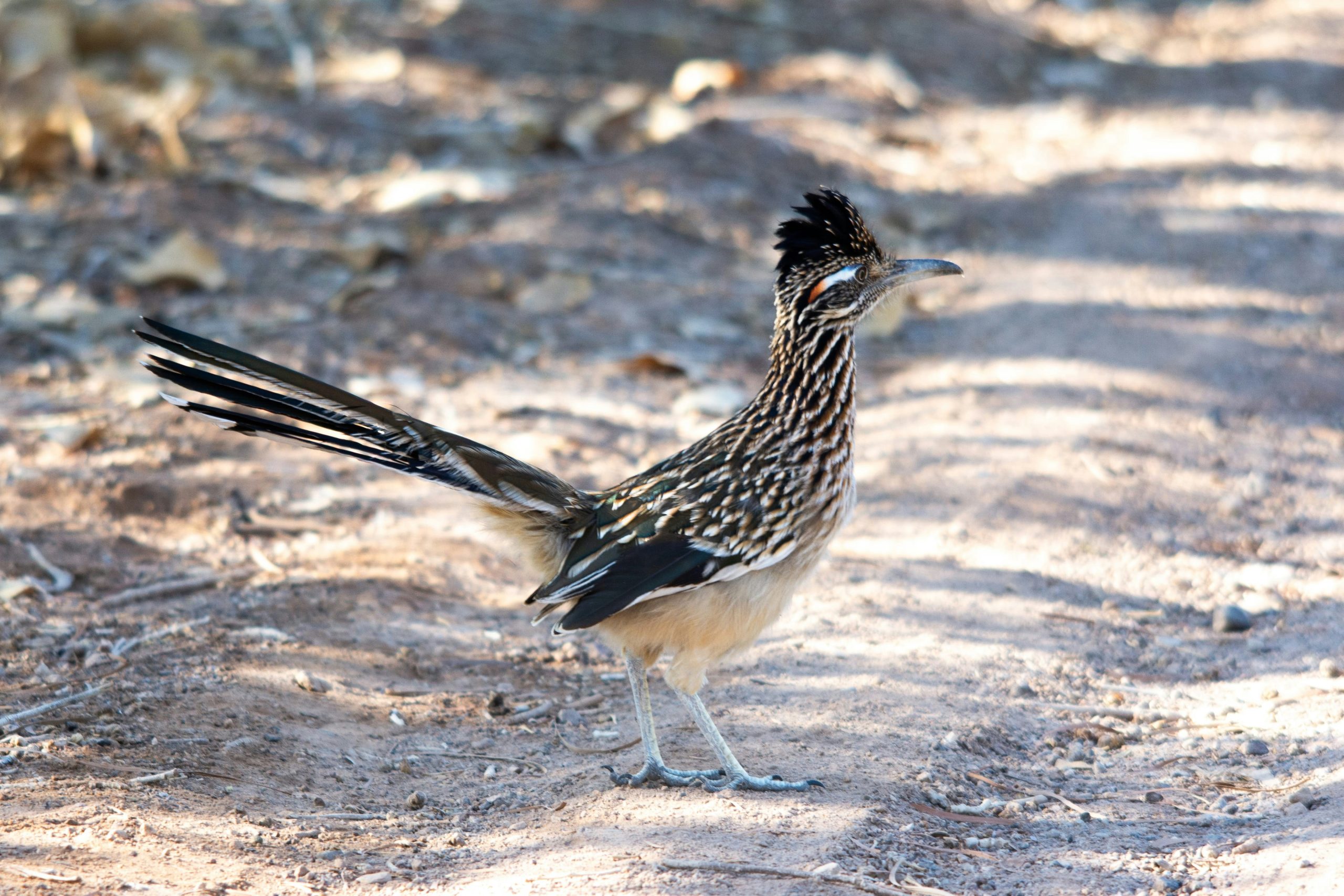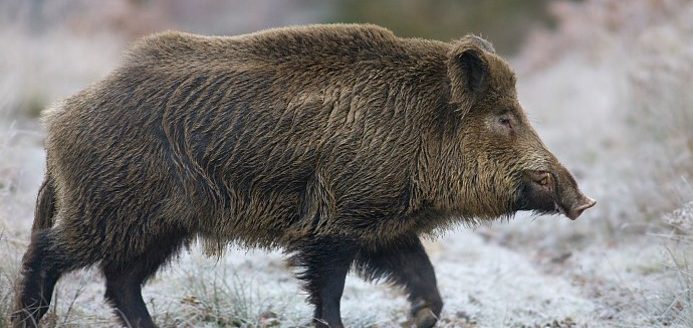A rundown of the roadrunner

(Photo by Jessica Kirkpatrick via Unsplash.)
Seeing a roadrunner dart across a highway is not an everyday occurrence in Oklahoma, but for some reason I’ve been seeing them every week for the past year near my home in rural north central Oklahoma. I’ve seen them sitting on my front doorstep, perched on my backyard fence and interacting with my backyard chickens.
Intrigued by these curious birds, I wanted to learn more about them and why I’ve been seeing them so often. I contacted Mark Howery, senior wildlife diversity biologist at the Oklahoma Department of Wildlife Conservation, to hear his perspectives.
Roadrunner populations
“Roadrunners in general are uncommon in Oklahoma, but you’ll get little pockets of them,” Howery said. “As you move south to north through the state, they become less common. Our highest roadrunner densities are close to the Red River, and then they peter out to almost nothing by the time you get to the Kansas border.”
The reason for this is the winter temperatures, Howery said, and the greatest limiting factor on the roadrunner population is over the winter survival. According to Howery, the February 2021 winter storm Uri led to the loss of at least half of the roadrunners in Oklahoma.
The unprecedented two-week cold spell included a Siberian air mass. The excessive cold and snow cover that hid the roadrunner food supply was too much for many of them.
Howery said the U.S. Fish and Wildlife Service’s Breeding Bird Survey indicates there are an estimated 790,000 roadrunners across the desert Southwest across Texas, up into Oklahoma and down into the northern part of Mexico.
“If I had to take a guess at Oklahoma’s population, I’d say we have probably 25,000 to 30,000 of the total roadrunners,” Howery said. ‘The greatest densities of roadrunners are in southern Texas, northern Mexico and southern New Mexico.”
However, he said their population has recovered, and he has not seen signs that their Oklahoma populations have hit a spike recently. He determined that I most likely have a pair of roadrunners that have moved in at my house and that is why I see them so often. I agreed this made sense, and then he shared more about these quirky birds.
There are two species of roadrunner. The greater roadrunner, named for its larger size, is native to the U.S. The lesser roadrunner is mostly found in Mexico.
Many are familiar with the popular Looney Toons characters, “Road Runner and Wylie Coyote,” but that cartoon is not very accurate when it comes to real roadrunners.
Roadrunners do not make a “beep, beep” sound and in general are much smaller than what the cartoon depicts. The greater roadrunner only grows to about 52 to 62 centimeters and the adults are similar in size to a crow.
True love
Roadrunners mate for life and are dedicated partners. Like many birds, they are territorial, but Howery said most other birds don’t maintain pair bonds outside of the breeding season like roadrunners.
Even though these birds are protected by the Migratory Bird Treaty—because they are part of the cuckoo family—they do not actually migrate. Roadrunner pairs will stay together, raise chicks and jointly defend a territory.
“Roadrunner territories are pretty variable in size,” Howery said. “In Texas, territories can be as small as 80 to 100 acres. In Oklahoma, they are usually between one to two square miles. They’ll hunt in that area, and they won’t leave it.”
Roadrunners are primarily insect eaters, but they also eat lizards and small snakes. In the wintertime, when the reptiles go underground and insects are sparse, they will eat rodents primarily. It some situations they will even eat small birds.
Howery said most people assume roadrunners are related to pheasants, chickens or turkeys, but their closest relative is actually the yellow billed cuckoo.
One unique trait of the cuckoo family is their foot structure. Most birds have three toes in the front and one toe on the back of the foot. All cuckoos, including the roadrunner, have two toes in the front and the remaining two toes face backward.
“Because of this, roadrunners leave distinctive tracks, because it looks like an ‘x’ with two toes forward and two toes backwards,” Howery said.
They can run up to 20 miles an hour but will only fly when they have no other option. Although most people assume the coyote is the roadrunner’s main threat, Howery said bobcats are actually the most common predator, with coyotes and hawks being secondary hunters. However, Howery said the most common cause of death is actually starvation, especially in the winter months when their food supply dwindles.
Nesting season
The nesting season runs from spring to mid-summer. Howery said roadrunners will build a nest made completely of sticks that is about 6 to 8 inches in diameter. Their nests are usually low to the ground—about 2 to 4 feet high. The most common trees roadrunners will choose for their nests are sand plum thickets, cedar trees and bodark trees.
Roadrunner pairs share in the incubation period of the eggs with the females sitting on the eggs during the day and males taking the night shift. That’s teamwork if you ask me! They raise one brood of offspring per year, which includes two to three chicks.
Howery said the chicks stay in the nest for about three weeks before they fledge or leave the nest. He said roadrunners are a little bit unique in that the chicks stay with their parents for two to three weeks learning how to hunt, instead having to rely mostly on instincts.
After my conversation with Howery, I realized my house is most likely the perfect habitat for my roadrunner couple. My home is surrounded by a shelterbelt of cedar trees giving them an optimal location for a nest, they receive the same predator protection from my Great Pyrenees as my chicken flock and they have food and water sources.
I understand why they moved into my neighborhood and I’m happy to have them around—especially if they feast on the grasshoppers that always plague my garden. I love that they’ve found a safe place to raise their brood, and I’m looking forward to watching them teach their chicks to hunt this summer. Nature never fails to educate and amaze!
Lacey Vilhauer can be reached at 620-227-1871 or [email protected].



